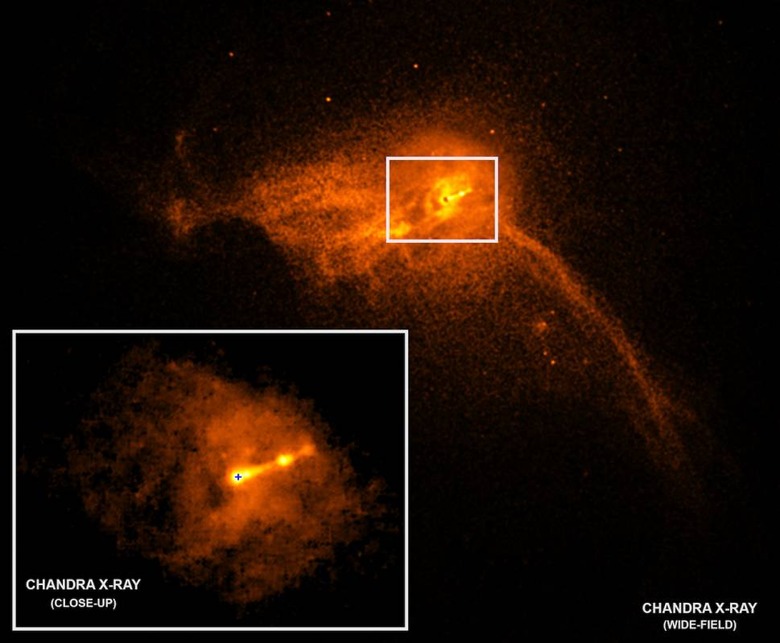This First Ever Image Of A Black Hole Is Voraciously Epic
The first ever image of a black hole, captured as it feasts on light, has been released, the result of groundbreaking research spanning eight telescopes spread around the globe. 55 million light years from Earth, and with a mass 6.5 billion times that of our sun, the vast black hole is the voracious center of the Messier 87 galaxy.
As you'd expect, the black hole itself is, well, black. Its gravitational pull is immense, given its enormous mass and density. That's sufficient even to pull in light.
However it also has a disk of material surround it, heated enormously by the forces pulling it to the "event horizon." When – as is the case with this photo of the Messier 87 black hole – that superheated material is viewed against a brighter backdrop, it casts a "shadow" on what's behind it. Of course, capturing an image of that is harder than the theory.
To do it, the team behind the Event Horizon Telescope (EHT) harnessed eight, ground-based radio telescopes in unison. Positioned around the globe – including at volcanoes in Hawai`i and Mexico, mountains in Arizona and the Spanish Sierra Nevada, the Chilean Atacama Desert, and Antarctica – the array takes advantage of incredibly precise synchronization to capture an observation of the same event.

There's no physical connection between the eight EHT locations. However by using hydrogen maser-based atomic clocks, the data captured in April 2017 could be synchronized identically. Stored on high-performance helium-filled hard-drives, the roughly 350 terabytes of data per day were then combined on supercomputers, before a new image conversion technique designed specifically for this process turned them into the image you see here.
The result is an astonishing degree of accuracy and detail. If, the EHT team explains, you had a telescope with the same accuracy in Paris, you'd be able to read newsprint in New York. Instead, though, the Messier 87 black hole was selected.
Though it's not the only supermassive black hole out there, it was picked as the most likely candidate for success with the EHT. As well as being – relatively – close to Earth, it also has a huge mass, thus creates a larger shadow. The event horizon boundary of the black hole is actually approximately 2.5x smaller than the shadow. Indeed, the Messier 87 black hole is believed to measure less than 25 billion miles across.
This was all done for more than just bragging rights, mind. The research allows new tests of Einstein's general relativity theory.
"If immersed in a bright region, like a disc of glowing gas, we expect a black hole to create a dark region similar to a shadow," Heino Falcke of Radboud University, the Netherlands, and chair of the EHT Science Council, said of the findings, "something predicted by Einstein's general relativity that we've never seen before. This shadow, caused by the gravitational bending and capture of light by the event horizon, reveals a lot about the nature of these fascinating objects and allowed us to measure the enormous mass of M87's black hole."
The findings may also help answer questions like figuring out where energy pulled into a black hole ends up, or why particles are energy-boosted around them. These jets of particle energy can extend more than a thousand light years from the center of the black hole, and are traveling at close to the speed of light.
